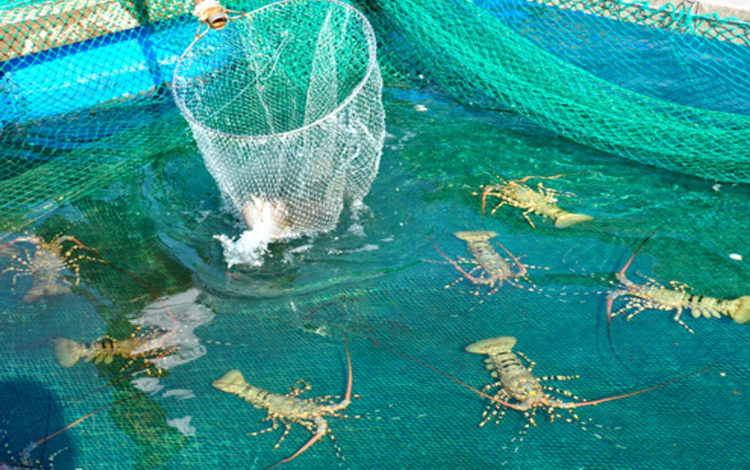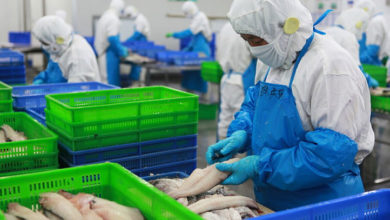Khánh Hòa: Urgent search for causes to lobster deaths

On April 16, the Department of Agriculture and Rural Development of Khánh Hòa province, in collaboration with the Institute of Fisheries III and the People’s Committee of Vạn Ninh district, organized a survey team to assess the specific causes of lobster deaths in the areas of Vạn Thạnh and Vạn Hưng, located in Vân Phong Bay.
At the survey locations, the team conducted environmental parameter measurements in areas where lobsters were found dead, as well as collected water samples from cages, the seabed, specimens of diseased lobsters, and sediment samples.
Phan Ngọc Nam, a lobster farmer in Mũi Nai area, Vạn Thạnh commune, reported that lobster deaths had been occurring for about three months. In his family, which currently operates 100 cages, an average of 10 to 30 lobsters die per day, weighing between 0.2 to 0.3 kg each. Before dying, lobsters show signs of incomplete molting or partial shell shedding. When dead, lobsters exhibit black spots on their gills.
Many farmers believe that this year’s lobster mortality rate is higher and earlier than usual. Typically, lobster deaths occur after eight months of stocking. However, this year, after just four months, the lobster mortality rate is already significantly high. So far, Nam’s family has lost about 40% of their yield due to lobster deaths, despite the normal farming period for lobsters extending from 15 to 20 months.
Trần Thanh Thúy, Deputy Director of the Department of Livestock and Veterinary Medicine of Khánh Hòa province, stated that the department had taken lobster samples to search for parasites, Vibrio spp. bacteria, and performed fresh examination on the lobster specimens. However, the analysis results did not detect parasites, the causative agent of black gill disease, or Ricketsia, the causative agent of milky hemolymph disease. However, Vibrio spp. infection was detected in lobsters.
Therefore, the department reported to the Department of Agriculture and Rural Development to organize a team in collaboration with the Research Institute for Aquaculture No.3 to continue searching for the causes of lobster deaths. Additionally, lobster farmers are advised to closely monitor weather fluctuations, water color, and environmental changes in the farming areas to promptly implement necessary measures.
Lê Văn Hoan, Deputy Director of the Department of Agriculture and Rural Development of Khánh Hòa province, explained that this year, due to the influence of El Nino, hot weather arrived earlier than usual. This unfavorable condition affects the health of aquaculture species. Through surveys, the team observed that disease outbreaks in lobsters this year also occurred earlier than usual.
VFM






